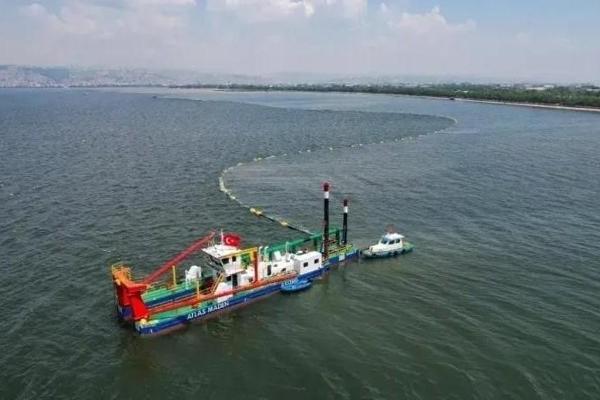Ministry extends protection boundaries for Marmara Sea
ANKARA


The Environment, Urbanization and Climate Change Ministry has expanded the boundaries of a previously established action plan, placing additional areas around the Marmara Sea and the Princes’ Islands under protection, according to a decree in the Official Gazette.
Following the mucilage crisis that emerged in the Marmara Sea in 2021, a comprehensive action plan was formulated, designating a vast 1.2 million-hectare region as a special environmental protection zone. In the wake of this declaration, a team of 15 academics from Istanbul University conducted research at 14 stations, while 22 academics from regional universities carried out biodiversity studies at 90 different stations as part of the "Terrestrial-Coastal and Marine Biological Diversity Research Project."
Scientists documented a total of 815 plant species, including nine endemics to the Marmara region islands, as well as 10 protected reptile species and 51 mammal species. Furthermore, ornithological surveys recorded the presence of 27 bird species on the Princes' Islands.
In light of new findings, a decree signed by President Recep Tayyip Erdoğan and published in the Official Gazette has further expanded the boundaries of the protection zone.
According to the decree, 485 hectares of forested land in Balıkesir, 195 hectares in the Kumkent region of Çanakkale, 108 hectares within the Kumkale Delta in Çanakkale and 138 hectares of forested area in Tekirdağ have been incorporated into the protection zone.
The ministry will now implement additional measures to restore the ecosystem in the Marmara Sea and ensure the continuation of the region's vital ecological processes, underpinned by ongoing scientific research.
The region is of paramount international significance, hosting a rich biodiversity vital to both the Black Sea and Mediterranean ecosystems. Scientific data underscores the area's rarity as a critical biological corridor, meriting stringent protection. Scientific reports emphasize the symbiotic relationship between the marine and island ecosystems, alongside the crucial role of coastal ecosystems, all meticulously documented in scientific studies.
